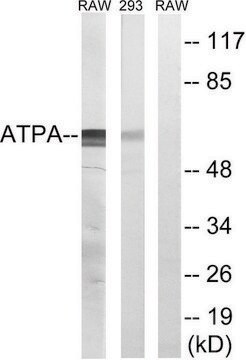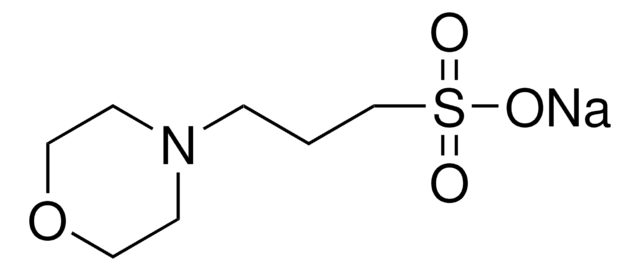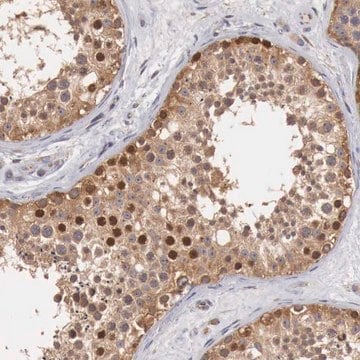PHG0007
MOPS
Fabricação farmacêutica
Sinônimo(s):
Ácido 3-(N-morfolino) propanossulfônico, Ácido 4-morfolino propanossulfônico
About This Item
Produtos recomendados
fonte biológica
synthetic
Nível de qualidade
Ensaio
≥99.5%
forma
powder
técnica(s)
cell culture | mammalian: suitable
Impurezas
Endotoxin, microbial, and trace metals; tested
pH
2.5-4 (1 M in H2O)
faixa de pH útil
6.5-7.9
pKa (25 °C)
7.2
λ
1 M in H2O
adequação
suitable for manufacturing use
atividade externa
Cytotoxicity, DNase, NICKase, RNase, and Protease; tested
cadeia de caracteres SMILES
OS(=O)(=O)CCCN1CCOCC1
InChI
1S/C7H15NO4S/c9-13(10,11)7-1-2-8-3-5-12-6-4-8/h1-7H2,(H,9,10,11)
chave InChI
DVLFYONBTKHTER-UHFFFAOYSA-N
Procurando produtos similares? Visita Guia de comparação de produtos
Descrição geral
M-Clarity Program
Buffer quality is vital for the success of biopharmaceutical processes, because buffers are indispensable in nearly every production step.
Our broad portfolio of buffer materials manufactured under appropriate controls is tailored to your needs. Ranging from non-GMP grades for low-risk application, to IPEC-PQG GMP for higher-risk applications, we have products covering all your manufacturing needs.
Aplicação
MOPS is used in cell culture media, biopharmaceutical buffer formulations (both upstream and downstream). MOPS based buffers are used in purification bioprocesses of antibodies, peptides, proteins and blood components.
Informações legais
substituído por
Código de classe de armazenamento
11 - Combustible Solids
Classe de risco de água (WGK)
WGK 1
Ponto de fulgor (°F)
230.0 °F - closed cup
Ponto de fulgor (°C)
110 °C - closed cup
Certificados de análise (COA)
Busque Certificados de análise (COA) digitando o Número do Lote do produto. Os números de lote e remessa podem ser encontrados no rótulo de um produto após a palavra “Lot” ou “Batch”.
Já possui este produto?
Encontre a documentação dos produtos que você adquiriu recentemente na biblioteca de documentos.
Os clientes também visualizaram
Nossa equipe de cientistas tem experiência em todas as áreas de pesquisa, incluindo Life Sciences, ciência de materiais, síntese química, cromatografia, química analítica e muitas outras.
Entre em contato com a assistência técnica







